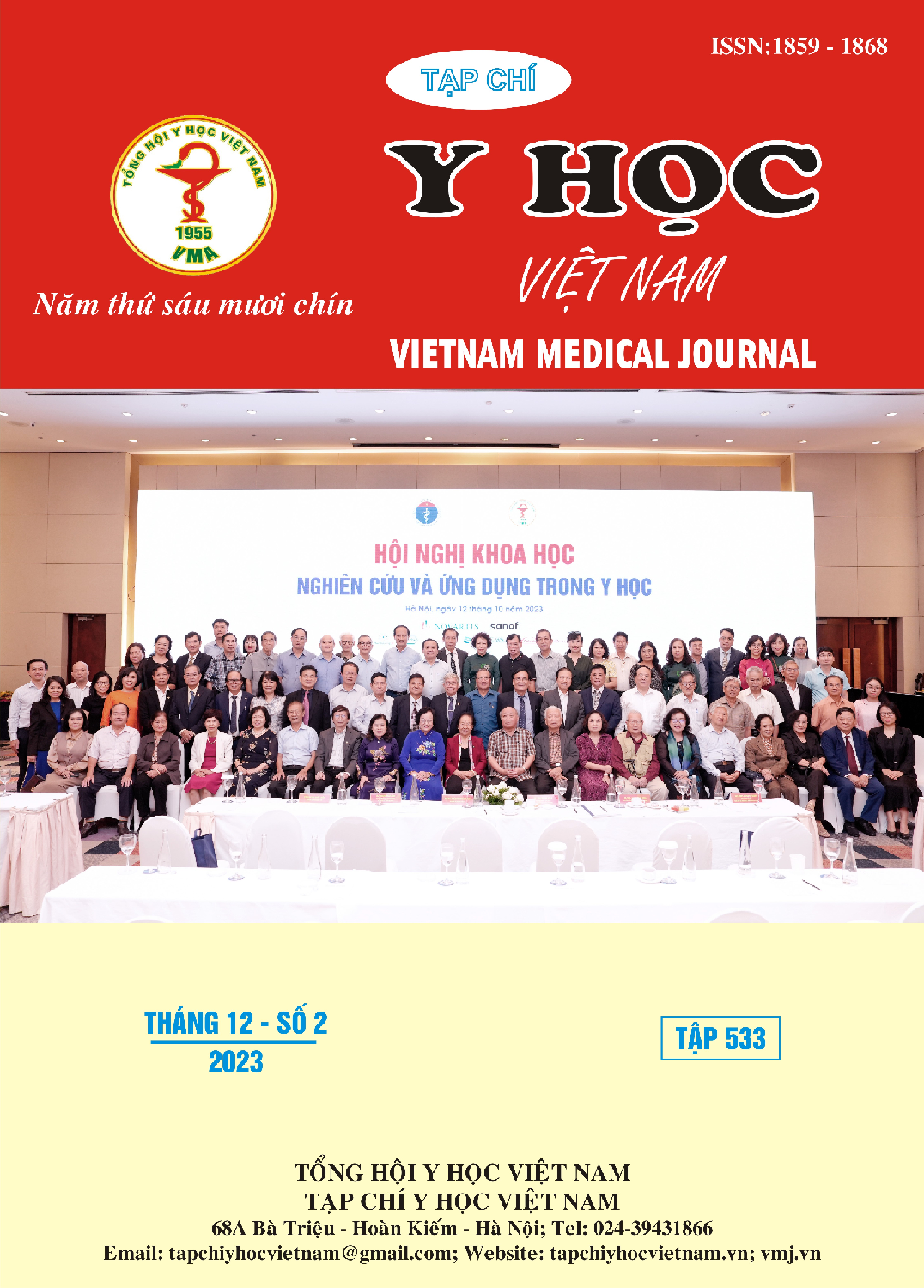RESULTS OF IMPROVING CERVICAL SPINE SYNDROM BY ULTRASOUND THERAPY COMBINED WITH ELECTRO-ACUPUNCTURE AND ACUPRESSURE MASSAGE ON CERVICAL SCAPULOHUMERAL SYNDROME
Main Article Content
Abstract
Objective: The purpose of this study was to evaluate the effectiveness of improving cervical spine syndrome by ultrasound therapy combined with electro-acupuncture and acupressure massage on patients with cervical scapulohumeral syndrome. Subjects and Methods: This study was designed as a controlled interventional clinical trial, comparing the before and after treatments. 60 patients diagnosed with the cervical scapulohumeral syndrome were divided into 2 groups: the study group was treated with ultrasound therapy combined with electro-acupuncture and massage; the control group was treated with electroacupuncture and massage. Results: After 15 days of treatment, the results showed that both groups recorded an improvement of VAS pain score, cervical spine’s range of motion and muscle tension level (p < 0.05), the study group improved better than the control group (p < 0.05). Conclusions: The combination of the ultrasound therapy with electro-acupuncture and acupressure massage had good effects in the patients with cervical scapulohumeral syndrome.
Article Details
References
2. Bộ Y tế. Quy trình kỹ thuật Y học cổ truyền, Quy trình 46. Hà Nội: Nhà xuất bản Y học 2008.
3. Nguyễn Nhược Kim. Châm cứu và các phương pháp chữa bệnh không dùng thuốc. Hà Nội: Nhà xuất bản Y học; 2013.
4. Nguyễn Xuân Nghiên. Phục hồi chức năng. Hà Nội: Nhà xuất bản Y học; 2018.
5. Trần Thanh Phương. Đánh giá tác dụng của cát căn thang điện châm và vận động không xung lực điều trị hội chứng cổ vai cánh tay do thoái hóa cột sống cổ. Hà Nội, Trường Đại học Y Hà Nội; 2020.
6. Nguyễn Văn Tuấn. Đánh giá hiệu quả điều trị hội chứng cổ vai tay do thoái hoá đốt sống cổ bằng phương pháp điện châm kết hợp xoa bóp bấm huyệt. Tạp chí Y học Việt Nam. 2021;July 20:102-105.
7. Corey DL CD. Cervical radiculopathy. Med Clin North Am. 2014;98(4):791-799.
8. Childress MA BB. Nonoperative Management of Cervical Radiculopathy. Am Fam Physician. 2016;93(9):746-754.
9. Somaye Kazeminasab SAN, Parastoo Amiri, Hojjat Pourfathi, Mostafa Araj-Khodaei. Neck pain: global epidemiology, trends and risk factors. BMC Musculoskelet Disord. 2022;23:26.
10. Wang C TF, Zhou Y, He W, Cai Z. The incidence of cervical spondylosis decreases with aging in the elderly, and increases with aging in the young and adult population: a hospital-based clinical analysis. Clin Interv Aging. 2016;11:47-53.


